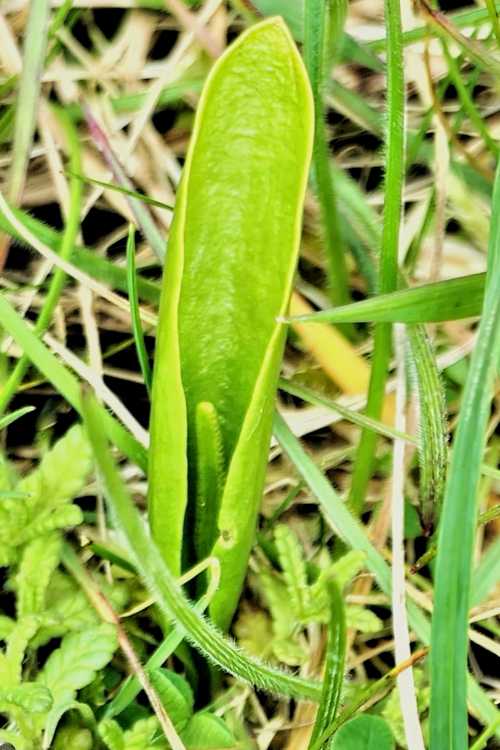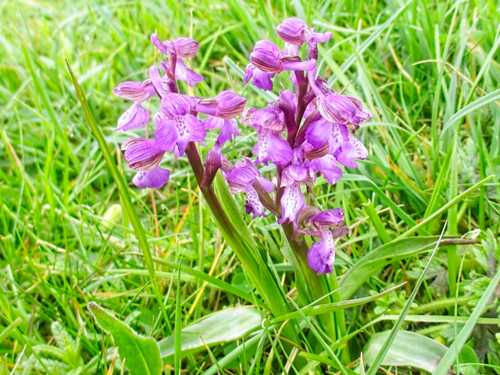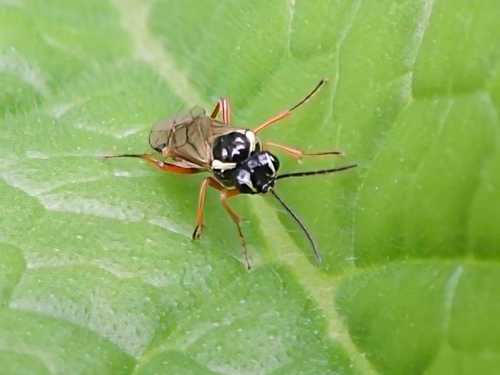Leaders: Felicity Gilmour, Geoff Hiscocks, Rob Randall
Nine members assembled at the Wiltshire Wildlife Trust car park at Lower Moor Farm on a dull but dry day to explore the many fascinating features of Clattinger Farm, with its traditionally managed meadows, and the adjacent flooded gravel pits. The meadows are famous for their Snake’s-head Fritillaries, which were abundant in some fields, while Green-winged Orchids were the main attraction in others. Cowslips were everywhere and a single Adder’s-tongue Fern was spotted. There are usually more but this one had probably emerged early. There were also winter rosettes of Common and Heath Spotted Orchid and Bee Orchid. Marsh Marigolds, or Kingcups, were in full flower and Rob was able to point out Greater Burnet, Saw-wort, Devil’s-bit Scabious and Tubular Water-dropwort, which would flower later in the year.

Fritillaria meleagris © Rob Randall

Adder’s-tongue © Andrew Harrison
Insects were in short supply due to the cold conditions but Alvan White spotted a rather colourful sawfly, Aglaostigma fulvipes, sheltering on a comfrey leaf, he also tried dipping for insects in the water troughs and caught some beetle larvae. A scrap of wool tied to a Blackthorn bush was a familiar indicator to Geoff Hiscocks of the presence of an egg of the Brown Hairstreak. Geoff had surveyed for these earlier in the year and was able to point out the egg concerned.

Green-winged Orchid © Rob Randall

Sawfly (Aglaostigma fulvipes) © Alvan White
Birds were very vocal, especially as the day warmed up. Blackcap and Chiffchaff were joined by Ceti’s, Reed, Sedge and Willlow Warblers and many commoner species were seen or heard. Mobile phones were put in recording mode to help identify the warblers. On the way back to the cafe for lunch the party passed a herd of Belted Galloway cattle, who help manage the reserve. Black-headed Gulls, some in summer plumage, were feeding on the lakes and a Red Kite made an appearance. Other visitors had seen Otters so Andrew Harrison stayed behind after the party left and was rewarded with a sighting.
Rob Randall

Recent Comments